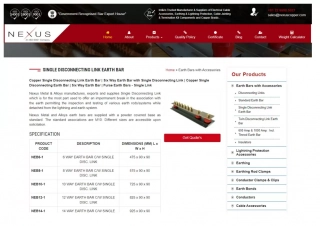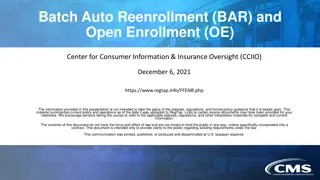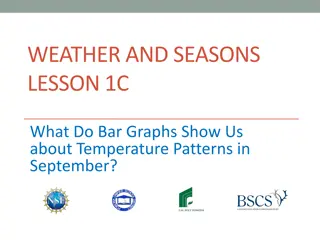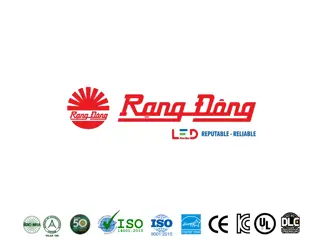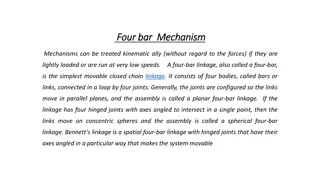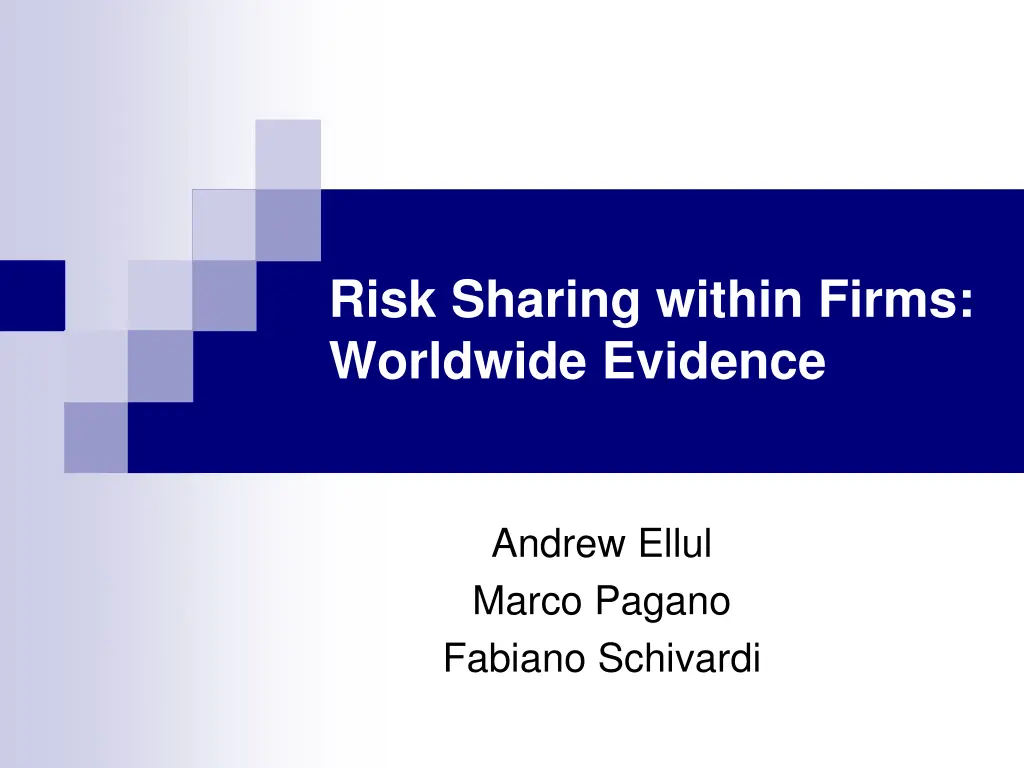
Risk Sharing within Firms: Worldwide Evidence
Explore the concept of insurance within firms and the factors influencing the extent of insurance provided to employees. Factors such as ownership structure, access to capital markets, and social security institutions impact the level of protection against employment and wage risks. Discover how family firms compare to non-family firms in offering insurance to employees based on global evidence.
Download Presentation

Please find below an Image/Link to download the presentation.
The content on the website is provided AS IS for your information and personal use only. It may not be sold, licensed, or shared on other websites without obtaining consent from the author. If you encounter any issues during the download, it is possible that the publisher has removed the file from their server.
You are allowed to download the files provided on this website for personal or commercial use, subject to the condition that they are used lawfully. All files are the property of their respective owners.
The content on the website is provided AS IS for your information and personal use only. It may not be sold, licensed, or shared on other websites without obtaining consent from the author.
E N D
Presentation Transcript
Risk Sharing within Firms: Worldwide Evidence Andrew Ellul Marco Pagano Fabiano Schivardi
Motivation: insurance within firms The idea that firms provide insurance to workers dates at least back to Knight (1921): the system under which the confident and venturesome assume the risk and insure the doubtful and timid by guaranteeing to the latter a specified income in return for an assignment of the actual results ... is the enterprise and wage system of industry (269-70) Formalized in the implicit contract model of Baily (1974) and Azariadis (1975): risk-neutral entrepreneurs provide insurance to risk-averse workers and insulate their salaries from adverse shocks to production Entrepreneurs ability to provide insurance to workers depends crucially on their superior access to financial markets: they can diversify idiosyncratic risk away better than workers
How much insurance? Do firms have access to developed capital markets? If not, they cannot supply insurance to their employees Can firms commit not to breach implicit contract? If not, they cannot credibly supply insurance to employees Which shocks can firms insure against? The optimal level of insurance depends on the persistence of the shocks (Gamber, 1988). Indeed Italian firms fully absorb temporary shocks to workers wages but only partly permanent ones (Guiso, Pistaferri and Schivardi, 2005) Are workers protected by public unemployment insurance or employment law? If so, this reduces their demand for insurance from firms
This paper Question is: how much insurance do firms give to their employees? To answer this question, we identify factors that can shift the supply and demand of insurance On the supply side, the shift parameter is firms ownership structure: do family firms provide higher protection against employment and wage risk than non-family firms? No obvious answer here: Non-family firms have better access to capital markets, are larger and more diversified across industries and countries Family firms have greater commitment ability: family reputation at risk, hostile takeovers unlikely, physical proximity with employees, etc. On the demand side, we look at cross-country differences in social security institutions and employment protection laws
Relevant literature In France, listed family firms appear to provide more employment insurance to their employees than non-family ones in the late 1990s: In heir-managed firms, employment is less sensitive to industry sales shocks, and they pay lower average wages and earn larger profits (Sraer and Thesmar, 2007, Bassanini et al. 2011) family-promoted CEOs are associated with lower job turnover and less wage renegotiation (Bach and Serrano-Velarde, 2010) family firms are less likely to face strikes and to have unionized workers, have fewer layoffs, sanctions and disputes ending in court (M ller and Philippon, 2007; Waxin, 2009) In U.S. listed companies, the evidence is more limited: family management: downsizing is less likely, but more severe family owners: large job cuts (> 6%) are less likely (Block, 2008)
Anecdotal evidence In the early 20thcentury at Endicott Johnson, shoe manufacturer in NY, new workers received a booklet declaring You have now joined the Happy Family . To maintain the company s welfare program in the wake of the Great Depression, the firm s patriarch, George F. Johnson was ready to cut dividends, defying the anger of his fellow stockholders (Mueller and Philippon, 2011) The family business in Warroad, Minnesota that didn't lay off a single one of their four thousand employees during this recession, even when their competitors shut down dozens of plants, even when it meant the owners gave up some perks and pay because they understood their biggest asset was the community and the workers who helped build that business (President Obama, 2012)
Empirical methodology Investigate whether firm-level employment and wages respond to shocks differentially between family and non-family firms high and low level of publicly provided job security Look at interaction between the two: is the insurance role of family firms less prominent where there is more job security? Also investigate role of capital market development: ambiguous, because it affects both firms and workers Condition on firms leverage (to be done) Distinguish between different types of shocks
Which shocks? Level of aggregation: Country level: aggregate shock, hard to insure against Industry level: insurable Idiosyncratic shock: insurable Source: Demand: sales growth, value added growth Productivity: calamity, e.g. earthquake, flood (to be done) Sign: Negative: only ones against which insurance is needed Positive: no need for insurance! Persistence: Temporary: insurable Permanent: uninsurable
Firm-level data Financial and accounting data from 38 countries for the period 1990-2010 obtained from Worldscope and Osiris Use firms for which we find employment data from Worldscope and Osiris for at least 5 years: this screen reduces the number of firms to 6,040, giving us 72,219 firm- year observations Wage data is only available for 2,480 firms Ownership data from Ellul, Pagano and Panunzi (2010) on whether the family blockholder is the ultimate blockholder and the ownership stake
Firm-level variables Two different dependent variables in the employment specifications: log of total empolyment, and delta of log of total employment In the wage specification: log of average wage Control variables: Size (log of total assets) Age (since incorporation or since IPO) Risk (standard deviation of weekly returns) Asset Tangibility Tobin Q Return on Assets For wage specification: Productivity (ratio of value added, i.e., total sales less non-labor costs of inputs, to the number of employees)
Sample description: geographical dispersion
Sample description: industrial dispersion
Industry and country-level data Measures of workers protection (demand side) at country level: unemployment insurance (security) Employment Protection Legislation (EPL) union density Measures of financial development For each industry in each country we obtain: value added (except that of firm i) sales (except that of firm i) Industry-level data will be used to provide us with one type of shock
Employment insurance: Family firms (1) (2) (3) (4) (5) Industry Sales 0.122*** (2.85) 0.0026 (0.90) 0.129*** (2.77) 0.0031 (0.91) -0.137** (-2.47) 0.138** (2.60) 0.0028 (0.87) -0.141** (-2.41) 0.0159 (0.82) 0.0772** (2.27) 0.131** (2.51) 0.0027 (0.81) -0.138** (-2.36) 0.0152 (0.79) 0.0690** (2.14) 0.127*** (2.60) 0.0031 (0.91) -0.122** (-2.10) 0.0097 (0.52) 0.0582* (1.92) Family Firms Industry Sales x Family Firms Industry Sales x Unemployment Security Industry Sales x Family Firms x Unemployment Security Firm Control Variables Yes Yes Yes No Yes Fixed Effects Industry Industry Industry Firm Firm Year Dummies Yes Yes Yes Yes Yes R2 0.49 0.52 0.53 0.57 0.60
Employment insurance: Family firms (1) (2) (3) (4) (5) Industry Sales 0.128*** (2.72) 0.0032 (0.88) 0.126** (2.59) 0.0029 (0.91) -0.139** (-2.47) 0.121** (2.52) 0.0041 (0.96) -0.130** (-2.27) 0.0136 (0.95) 0.0728** (2.18) 0.119*** (2.40) 0.0032 (0.91) -0.122** (-2.23) 0.0131 (0.90) 0.0657** (2.06) 0.122** (2.42) 0.0037 (0.90) -0.119** (-2.02) 0.0088 (0.72) 0.0490* (1.88) Family Firms Industry Sales x Family Firms Industry Sales x Unemployment Security Industry Sales x Family Firms x Unemployment Security Industry Sales x Financial Development 0.0032 (1.62) 0.0027 (1.57) 0.0016 (1.34) 0.0014 (1.28) 0.0012 (1.26) Industry Sales x Family Firms x Financial Development -0.0593 (-1.59) Yes -0.0402 (-1.44) Yes -0.0351 (-1.32) No -0.0302 (-1.40) Yes Firm Control Variables Yes Fixed Effects Year Dummies R2 Industry Yes 0.32 Industry Yes 0.35 Industry Yes 0.62 Firm Yes 0.62 Firm Yes 0.63
Employment insurance: Transitory shocks (1) (2) (3) (4) Transitory Shock 0.282** (2.44) 0.265** (2.40) 0.281** (2.52) 0.260*** (2.31) Transitory Shock x Family Firms Transitory Shock x Unemployment Security -0.318*** (-2.81) -0.302*** (-2.72) 0.0309 (1.59) -0.211** (-2.35) 0.0284 (1.50) Transitory Shock x Family Firms x Unemployment Security Firm Control Variables 0.0944* (1.70) 0.0837 (1.51) Yes Yes Yes No Fixed Effects Industry Industry Industry Firm Year Dummies Yes Yes Yes Yes R2 0.19 0.21 0.30 0.31
Employment insurance: Permanent shocks (1) (2) (3) (4) Permanent Shock 0.402*** (2.92) 0.471*** (2.98) -0.102* (-1.74) 0.465** (2.97) -0.096* (-1.70) 0.0375 (1.42) 0.0311 (1.48) 0.501*** (3.16) -0.072 (-1.41) 0.0322 (1.47) 0.0280 (1.30) Permanent Shock x Family Firms Permanent Shock x Unemployment Security Permanent Shock x Family Firms x Unemployment Security Firm Control Variables Yes Yes Yes No Fixed Effects Industry Industry Industry Firm Year Dummies Yes Yes Yes Yes R2 0.15 0.18 0.30 0.31
Wage Insurance: Family firms (1) (2) (3) (4) Industry Value Added 0.062* (1.90) -0.031** (-2.27) 0.052* (1.81) -0.027** (-2.19) 0.029* (1.89) 0.058* (1.78) -0.029** (-2.20) 0.030* (1.92) 0.0062 (0.88) 0.012 (1.39) 0.052* (1.77) -0.021** (-2.08) 0.024** (1.75) 0.0071 (0.79) 0.015 (1.41) Family Firms Industry Value Added x Family Firms Industry Value Added x Unemployment Security Industry Value Added x Family Firms x Unemployment Security Control Variables Yes Yes Yes No Fixed Effects Industry Industry Industry Firm Year Dummies Yes Yes Yes Yes R2 0.28 0.30 0.32 0.35
Concentration of family firms Family firms may tend to operate in industries that are relatively sheltered from competition (a selection effect) If they self-select into certain industries, family firms may run more stable firms, both in terms of employment and sales Are family firms less present in competitive industries? We measure competition by computing an index of sales concentration at the industry-country level and at the global-industry (an Herfindahl index) Using this measure, we found that 56% of non-family firms are in industries where competition is above median In contrast 54% of family firms are in industries where competition is above median
Conclusion Family firms provide more protection than non-family firms against employment shocks This difference is stronger for transitory shocks than permanent ones present for negative shocks, not for positive ones They do so more in countries with low employment security There is no evidence that they do so more in countries with higher financial development family firms offer more wage insurance than non-family firms during shocks



